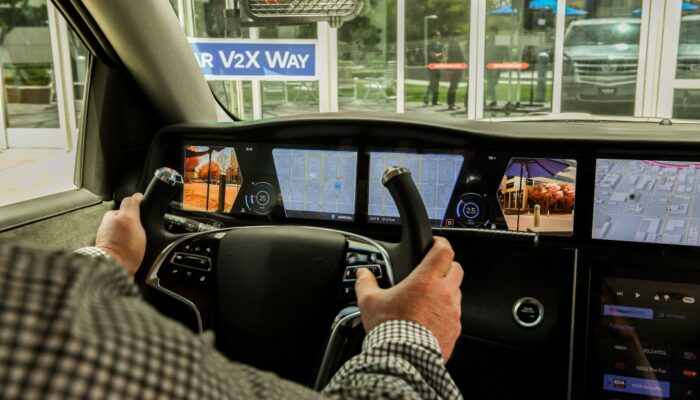Early in my career, I remember being at a stoplight, looking over and admiring a sleek, red McLaren next to me. For a long time, I wanted that car (then I moved to Chicago and an SUV seemed much more practical!). Today, the automobile industry is in a sea change that may make stories like mine hail from another era.
Where once many people (I included) had their eye on vehicles that brought them status, luxury, style or even an amplified expression of self, buyers going forward will be more pragmatic. Will consumers continue to buy cars? Of course. Will automotive manufacturers continue to make cars? Absolutely. The reasons that inform both, however, are changing, in part, due to the global pandemic. Many of us have realigned what is most important to us and changed how we conduct our daily lives. In an article entitled “Building the Automotive Industry of 2030” published by management consulting firm Oliver Wyman, the firm predicts that “in the future, the majority of people will be ‘mobilists’ who simply want to get from point A to B and are not emotionally involved in cars.”
Qualcomm, for example, is answering the needs of next generation of drivers that will use their car as a connected tool, one that provides a way to get to their destination, and also achieve their work and personal goals through fluid mobility. I predict connectivity in and out of the car will be one of the most important consumer demands for the automotive industry. Qualcomm’s Snapdragon Wireless Platforms are designed to enhance vehicle connectivity and are engineered to provide secure, intelligent, personalized and safer experiences through its comprehensive platforms to help connect your vehicle to the cloud, each other, and virtually everything around them, all while supporting next-level intelligence for enhanced in-vehicle experiences, new connected car services, higher levels of safety and autonomy.
As a part of the growing portfolio of Snapdragon Wireless Platforms, the company offers 4G and 5G automotive solutions, which support ultimate performance for in-vehicle experiences, while providing low-latency speeds, lane-level navigation accuracy and integrated C-V2X functionalities, as well as the newly introduced Qualcomm Car-to-Cloud (C2C) services to support new connected services and monetization opportunities. On-demand hardware capabilities include Wi-Fi and Bluetooth connectivity services and more to offer auto manufacturers connectivity tools that meet consumer needs and support new business models.
Combining these breakthrough wireless platforms with Qualcomm’s Snapdragon automotive cockpit solutions transforms in-vehicle experiences for both the driver and the passenger, helping support highly intuitive AI experiences for in-car virtual assistance, natural interactions between the vehicle and driver and contextual safety use cases.
As we see this transformation of the customer experience rapidly unfold, a look at Maslow’s hierarchy of needs is helpful. We’re seeing a greater emphasis for reliability and safety. These needs are part of life’s more basic needs and are found lower on the hierarchy. Other needs, like self-esteem and self-actualization are felt more fully in times of robust economics and confidence where status becomes more important.
As we celebrate Manufacturing Day, we also celebrate automobile manufacturing as a sector that has and will continue to play a huge role in everyday life. In the aforementioned article, Oliver Wyman states that “Electronic systems – and mobile communications in particular – will enable drivers to spend less time driving while in their cars and more time doing other things.” This more untethered approach to driving and mobility unleashes new possibilities for consumers to focus on more meaningful parts of their lives. Connectivity found in more intelligent driving technology is key.
Now let’s switch to reimagining worker demands. With the new normal, organizations need to build a more resilient and flexible workforce to respond to changing consumer needs. This is an opportunity to innovate! The old way of connecting the workforce needs to be refreshed. Frontline workers safety procedures need to be refreshed and workers’ skills need to be expanded. Always-on and everywhere connectivity is more critical than ever. For example, a mobile app could alert frontline workers about safety procedures and offer compliance training while workers commute to work. I see tremendous value for them to connect people while they are driving, again reinforcing the concept that cars will be a critical tool rather than a trendy symbol of wealth or style (although people will most likely still want that too!).
All this brings us to a business ecosystem that will rely more heavily on alliances rather than single company solutions.
While players remain the same: customers, makers, innovators. The roles of each are changing. And while the cars may look different and the technology be more advanced, these words by Henry Ford reminds us to always look forward rather than the way it’s always been: “If you always do what you always did, you’ll always get what you always got.”
Time to rethink how automobiles will get the next generation of drivers where they want to go.

